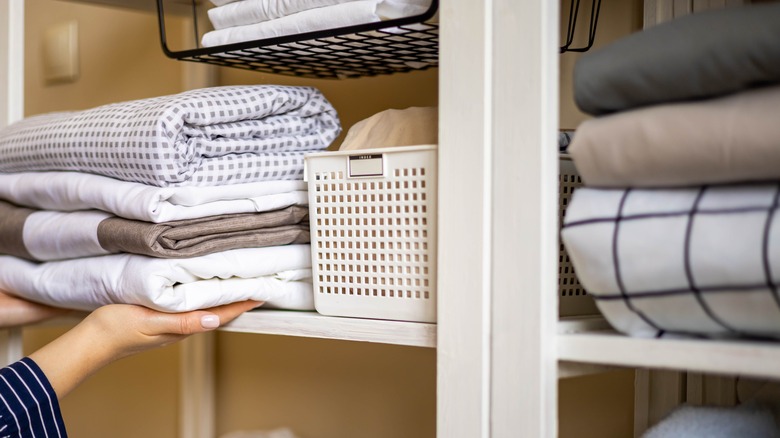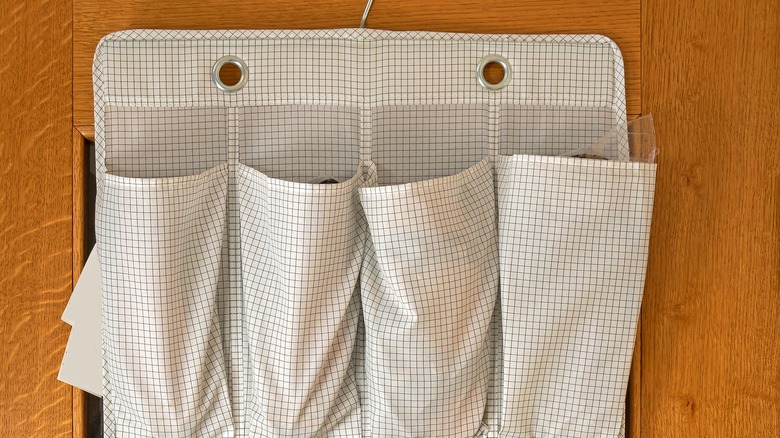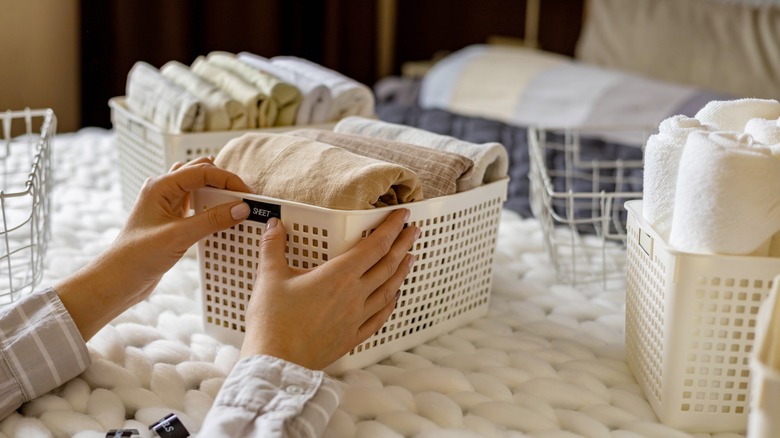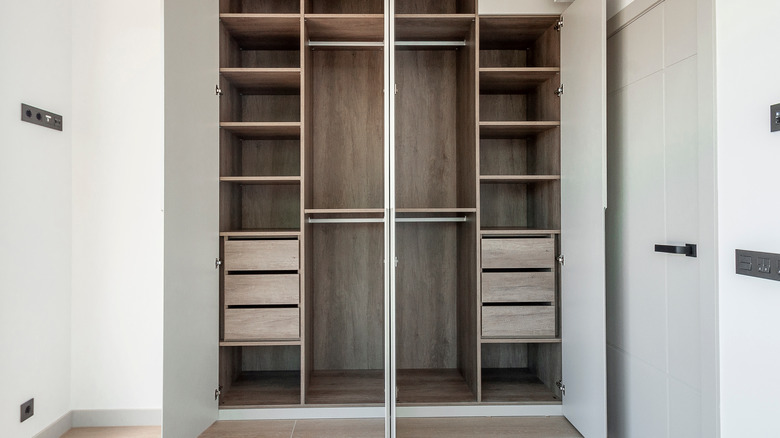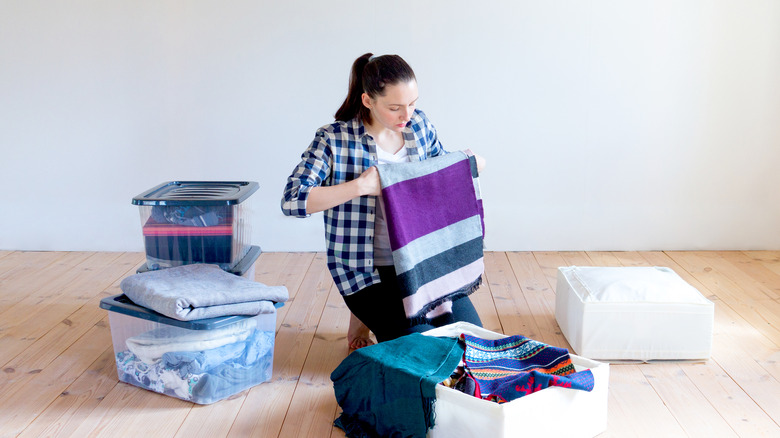5 Tips For Organizing Your Hall Closet
A hall closet can be a lifesaver in keeping your hall clutter free and tidy. Whether you use it for linens, coats and outdoor shoes, storage, or as an overflow for your wardrobe, The Cleaning Advantage says that these closets can end up disorganized and messy if you don't take control. A hall closet is often well used, being opened multiple times daily, with items taken in and out.
Sometimes you might feel as though you have only just tidied it, and before you know it, it's a cluttered mess again. Once you have everything neatly organized, it will be easier to see and grab what you need, plus simple ideas help everyone in the family to be on board. So what are the best ways to keep it organized and ensure the whole family can keep it contained and tidy too? We offer simple but effective solutions to this problem.
1. Declutter
The first and most crucial step is to declutter, says Today. One idea regarding coats, shoes, or other clothing items: If you haven't used them in a year, get rid of them. Some things will be past their best and need to be disposed of, while others can be donated if there's plenty of life left in them.
When it comes to linens, if there are sheets you never use or bedding sets you don't like, then make room in your hall closet by removing them. The same goes for anything you haven't touched in years. Once you have removed these unwanted and unloved items from your closet and have a good idea of everything you want to keep, you can start to organize it all cohesively. Start by getting everything out and putting like items together, says Joyful Derivatives, and have two piles; one for things that aren't used very often that can be stowed away, and items that are used regularly that need to be front and center.
2. Over-the-door storage
The door to your closet is perfect for installing an over-the-door hanger. There are so many options in shops now, wire racks, deep shelves, and woven baskets, the possibilities are endless, and the back of your door is an empty space, just waiting to be utilized. Some points to remember, via Blue I Style Blog, is that some hooks may damage the front of your door by scratching at the paintwork, and sometimes, if your door is quite tall, getting to the top of your overdoor storage might be difficult if you are not very tall yourself!
Blue I Style Blog had a tip to remedy both these problems. You will need a hammer, strong ribbon, tacks, and scissors. Measure how long you want the hanger to be from the top of your door and cut the ribbon to the appropriate length, concertina the ribbon to create extra strength, and using your hammer, tack the concertinaed section to the top of the door, creating a loop that you can now use to hang your hanger from.
3. Label, label, label!
Using boxes and storage bins and labeling them can make a massive difference to your organization, and The Homes I Have Made says utilizing pictures instead of words is sometimes the way to go. If you have small children and want the whole family to have a hand in keeping things organized, pictures on your storage bins and boxes rather than difficult-to-read words will be an enormous help. There are so many ways to label. There are sheets you can print off online like these from Living Well Mom; you can buy them in craft stores or online, or if you feel arty, you could make them yourself, involving the kids too.
Keeping items your children can reach, labeled, and on the lower shelves will make things easy for them to manage, while you can put stuff for the adults higher up. Bulky items in larger boxes that don't get used often can be placed at the back with large, easy-to-spot labels so you can quickly locate everything. All of this requires shelving, which leads neatly to the next topic.
4. Shelving
With so many shelving options, it can feel a little overwhelming. Figuring the best use for your hall closet will be the first step, whether for coats, cleaning products, or bedding and linens. Creative Closets suggests even using it for something out of the ordinary, such as overflow kitchen storage — effectively turning it into a pantry, for arts and crafts, or even a compact office.
Whatever you decide is the best use of space, shelving is bound to figure in the plans. Millers have some pros and cons of shelving; they say they are great for displaying things if that's the way you want to go. You can choose your height depending on your needs, so they are customizable and personal. The cons mentioned include things becoming messy and possibly needing dividers to stop stacks of folded clothes from toppling over. Still, these can easily be avoided using the previously discussed labeled boxes and bins.
5. Switch things up
One of the best tips for hallway closets primarily used for outdoor clothing and shoes is to switch things out depending on the season, says Builders' General. You don't want to push past summer jackets, sandy flip-flops, and straw hats to get out your scarves and other winter attire. Likewise, in summer, there is no point in taking up all the room in your closet with bulky winter coats and boots.
Using under the bed to store these items when out of season is one idea, but keeping things away from moisture and extreme temperatures is a must when storing items. You could always get a storage unit if you have a lot of possessions, suggests A1 Self Storage, and you don't want them to be damaged by extremes in climate. Places like the basement or the attic aren't always an option unless they are very dry and well protected from the elements all year round.
